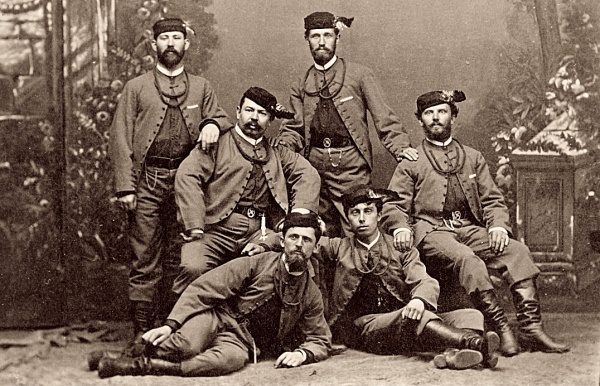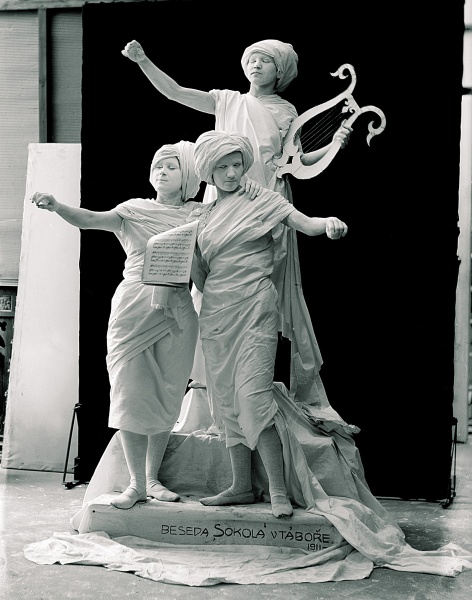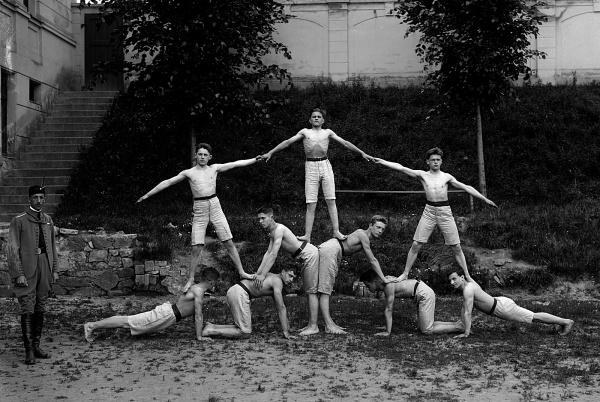Československá obec sokolská
Enlarge text Shrink text- Its Slet všesokolský. 4th, Prague, 1901. IV. slet všesokolský ... 1903.
- Masarykův slovník naučný, 1925:v. 6, p. 793 (Československá obec sokolská, resulted from renaming in 1902 of Svaz československého sokalstva)
- Malý Ottův slovník naučný, 1904:v. 2, p. 740-1 (Sokol; first such Czech gymnastics group organized 1862 in Prague Sokol units subsequently established in localities throughout Bohemia and Moravia (and elsewhere), which then formed hierarchical organizations. Local units (and the movement as a whole) known as Sokol)
The Sokol movement (Czech: [ˈsokol], "falcon") is an all-age gymnastics organization founded in Prague in the Czech lands of Austria-Hungary in 1862 by Miroslav Tyrš and Jindřich Fügner. It was based upon the principle of "a strong mind in a sound body". Sokol, through lectures, discussions, and group outings, provided what Tyrš viewed as physical, moral, and intellectual training for the nation. This training extended to men of all ages and classes, and eventually to women. The movement spread across all the regions populated by Slavic cultures, most of them part of either Austria-Hungary or the Russian Empire: present-day Slovakia, the Slovene Lands, Croatia, Serbia, Bulgaria, Poland (Polish Sokół movement), Ukraine, and Belarus. In many of these nations, the organization also served as an early precursor to the Scouting movements. Though officially an institution "above politics", Sokol played an important part in the development of Czech nationalism and patriotism, which found expression in articles published in the Sokol journal, lectures held in Sokol libraries, and theatrical performances at the gymnastic mass festivals called slets.
Read more on Wikipedia >
 Corporate Body
Corporate Body















